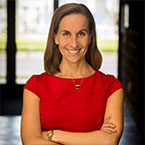By: Laura A. Jana, MD, FAAP & Jennifer Shu, MD, FAAP
It usually takes quite a while before children can master toothbrushing for themselves. Here are some practical suggestions to help you make brushing more fun for them and a matter of routine.
Start early. No teeth? No problem. Simply going through the motions by regularly brushing and cleaning gums still serves a very useful purpose.
Brush often. While we focus a lot on
bedtime brushing, technically speaking, your goal of brushing teeth is to clean food off of them, and the sooner the better. Yet few adults we know make a regular habit of brushing their teeth throughout the day. Start having your child brush after meals early in life and you stand a fighting chance of creating a lasting habit.
Sing, sing a song. Or set a timer. Or come up with some other creative way to keep your child engaged in the act of brushing her teeth for the recommended 2 minutes, or for at least as long as it takes to make sure that your combined efforts leave them clean. Some toothbrushes even light up or play music for the amount of time a child should keep brushing, preventing kids from being fooled into thinking that they've brushed long enough.
Check it out. If your child is showing signs of independence and insists on brushing on their own, then by all means let her. Just don't forget to get in the habit of proudly "checking out" their work at the end of each session while casually doing some touch-ups of your own.
Appeal to taste. If Cinderella, the Cat in the Hat, a race car, or an electric toothbrush similar to yours has better prospects of winning your child over than you do, then by all means oblige. Feel free to indulge their tastes by letting them choose toothbrushes and toothpaste that they can really get excited about. There are also many flavored toothpastes that taste great and make it fun to brush.
Hands off. Right around the age when you're likely to start brushing, your child is likely to start grabbing. By giving them a soft-bristled brush (or 2) of their own to have and to hold, you will be able to avoid a fight over yours—leaving you well equipped to get the job done. Sure, it may take 3 toothbrushes instead of 1, but it's a small price to pay for a routine that really works.
Go where no child has gone before. We suggest you pay particular heed (and direct your child's attention) to those teeth that are most likely to be neglected. While you're helping them brush, describe what you're doing in terms they can relate to by pointing out their "biting" teeth (the chewing surfaces), their "smile teeth" (you guessed it—right in the front), and the tricky teeth in the back. Your goal— to teach your child to leave no plaque unturned.
Toothpaste temptations
All children can benefit from
fluoride, but it's important to use the right amount of toothpaste. Current recommendations advise using a smear of fluoride toothpaste (or an amount about the size of a grain of rice) for children younger than 3 and a pea-sized amount for children 3 to 6. Since the fluoride found in toothpaste is clearly meant to be swished but not swallowed, make sure to help or watch your child while brushing. When they are old enough, tell them to spit out the toothpaste after brushing.
More information
About Dr. Shu
 Jennifer Shu, MD, FAAP ;serves as the medical editor of HealthyChildren.org and provides oversight and direction for the site in conjunction with the staff editor. Dr. Shu is a practicing pediatrician at Children's Medical Group in Atlanta, Georgia, and she is also a mom. She earned her medical degree at the Medical College of Virginia in Richmond and specialized in pediatrics at the University of California, San Francisco. Her experience includes working in private practice, as well as working in an academic medical center. She served as director of the normal newborn nursery at Dartmouth-Hitchcock Medical Center in New Hampshire. Dr. Shu is also co-author of
Food Fights and
Heading Home with Your Newborn published by the American Academy of Pediatrics (AAP). Jennifer Shu, MD, FAAP ;serves as the medical editor of HealthyChildren.org and provides oversight and direction for the site in conjunction with the staff editor. Dr. Shu is a practicing pediatrician at Children's Medical Group in Atlanta, Georgia, and she is also a mom. She earned her medical degree at the Medical College of Virginia in Richmond and specialized in pediatrics at the University of California, San Francisco. Her experience includes working in private practice, as well as working in an academic medical center. She served as director of the normal newborn nursery at Dartmouth-Hitchcock Medical Center in New Hampshire. Dr. Shu is also co-author of
Food Fights and
Heading Home with Your Newborn published by the American Academy of Pediatrics (AAP).
|
About Dr. Jana
 Laura A. Jana, MD, FAAP, is a pediatrician and mother of 3 with a faculty appointment at the Penn State University Edna Bennett Pierce Prevention Research Center. She is the author of more than 30 parenting and children's books and serves as an early childhood expert/contributor for organizations including the Maternal and Child Health Bureau, Primrose Schools, and
US News & World Report. She lives in Omaha, NE. Laura A. Jana, MD, FAAP, is a pediatrician and mother of 3 with a faculty appointment at the Penn State University Edna Bennett Pierce Prevention Research Center. She is the author of more than 30 parenting and children's books and serves as an early childhood expert/contributor for organizations including the Maternal and Child Health Bureau, Primrose Schools, and
US News & World Report. She lives in Omaha, NE.
|